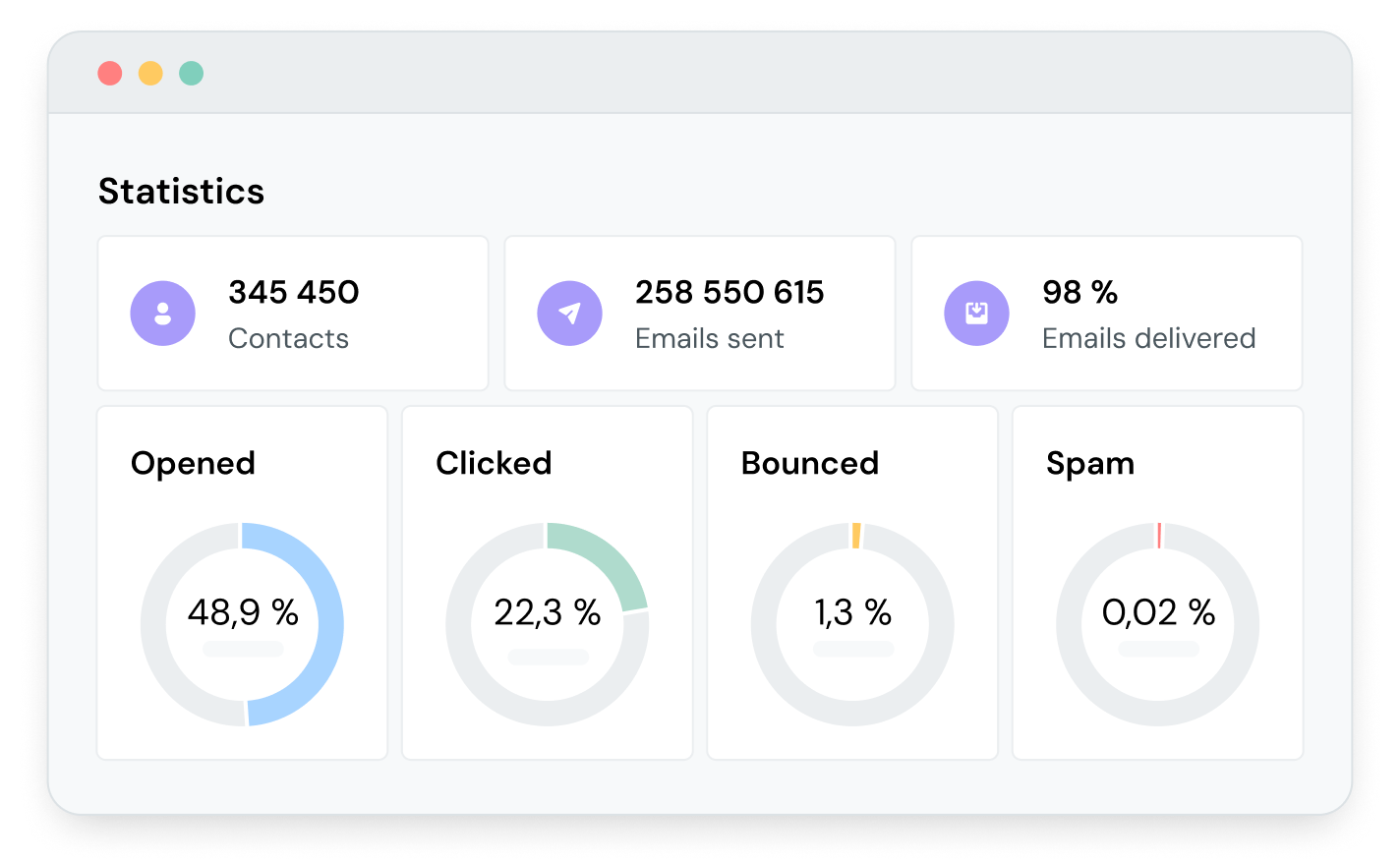Marketing
How to protect your engagement metrics from email bot clicks

Marketing

Email marketing is a data-driven strategy. Every campaign’s success is measured by metrics and KPI’s such as open rates, click-through rates, and conversions. But what if those numbers aren’t telling the whole story?
Well, it could be that a fox has entered the chicken coup in the form of an email bot – automated interactions that can inflate your engagement metrics, giving you a misleading picture of a campaign’s performance.
We’ll explore what email bot clicks and opens are, why they matter, and how Mailjet’s new bot activity detector on advanced statistics helps you get a clearer view of your email performance.
Email bot clicks and opens refer to automated interactions with your emails, typically generated by security software rather than a legitimate subscriber. These interactions most commonly occur when:
These automated clicks and opens inflate engagement metrics, making it appear as though an email campaign is performing better than it is.
Bot clicks and opens may seem harmless, but they can have serious consequences for email marketers:
Nearly all of us use engagement data to assess performance and optimize future campaigns. Inflated open and click rates can lead to misguided decisions, such as assuming a subject line or CTA is more effective than it actually is, overestimating audience interest in a particular type of content, or misjudging which contacts of an email list are the most engaged.
So, when you have to clean that email list – a highly recommended best email deliverability practice – you might find a large number of inactive subscribers make the cut. This leads to additional costs and over sending to an unengaged audience.
A/B testing is a crucial tool for optimizing emails, but bot clicks and opens can contaminate test results. For example, imagine running a subject line test to determine whether:
…performs better than:
…only to find out that bots are clicking both at the same rate. This would render the test useless because subscriber behavior wasn’t accurately measured. You could make the wrong choice thinking one version outperformed the other when, in reality, neither resonated with your audience.
Email marketers rely on return on investment (ROI) calculations to justify budgets and measure success. If bot clicks inflate engagement numbers, again, you might overestimate the effectiveness of your campaign.
For example, if your email analytics report:
…you might assume the landing page or product offer is the problem. However, if half of those clicks came from bots, the actual CTR is only 10%, meaning your conversion rate is much better than it seemed.
Without filtering out bot activity, you may waste time and budget fixing things that aren’t broken while overlooking the real issues.
You’re probably beginning to see a bit of a trend developing here. But again, email marketers rely on engagement metrics to determine lead quality and trigger automated workflows. If bot activity is counted:
This will frustrate both sales teams (who waste time on unqualified leads) and recipients (who receive irrelevant follow-ups).
Finally, email providers track engagement signals to determine whether your emails are legitimate or suspicious. If your emails suddenly receive an unusually high number of clicks or opens from bots, this could raise red flags with inbox providers causing your future emails to land in spam folders and impact your sender reputation.
By monitoring bot activity, you protect your sender reputation and avoid unnecessary deliverability issues.
While bot clicks and opens can be deceptive, there are key red flags that indicate non-human interactions with your emails. Here’s how you can identify bot behavior and take corrective action.
A spike in click-throughs on a newly sent campaign without a proportional increase in website visits, form submissions, and in some cases, sales, is a tell-tale sign of email bot activity. Subscribers typically click with intent, meaning a good percentage will take action beyond just clicking the email. If a recently sent email generates high click rates but zero conversions, bots may be to blame.
People take time to read an email before clicking. Even a relatively short communication will take us a few seconds to decide what to do with it. So, if you’re seeing click within milliseconds of sending, those interactions are likely automated security scans rather than subscriber engagement.
To detect this, you can:
Corporate security tools often scan all inbound emails from a single IP address. If your reports show:
…these may be indicators of bot activity, not engaged contacts.
It doesn’t matter how crammed your last newsletter was of insightful, industry updates – it’s extremely rare for a reader to click every single link in an email (sorry). However, bots frequently do this to test for threats.
So, if you see 100% click engagement across multiple subscribers, it’s likely bots are involved.
As you’ve just seen above, manually identifying bot activity can be time-consuming and difficult. Not ideal for smaller email teams who have plenty to focus on without worrying about the legitimacy of their engagement data.
Which is why Mailjet introduced Bot Activity Detector to automate the process for you. The tool:
Premium customers have the bot activity filter on in their campaign stats. By default, bot activity is removed, but you can choose to include it for benchmarking purposes if you so wish.
With this feature, Mailjet customers can finally get clean, reliable email engagement data, instilling confidence their strategies are based on real audience behavior, not inflated bot activity.

Bot clicks and opens are a challenge that every email marketer must address. Failing to account for false activity can lead to distorted engagement metrics, misleading test results, and wasted marketing efforts.
By understanding how to detect bot clicks and leveraging Mailjet’s Bot Activity Detector, marketers can optimize their campaigns with confidence knowing they are measuring real subscriber engagement.
Ready to take control of your email analytics?